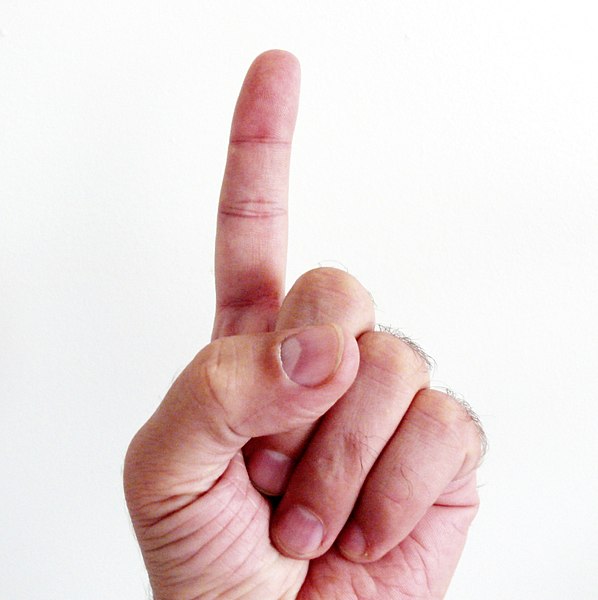The index finger is the second digit of a human hand. It is located between the thumb and the middle finger. It is usually the most dextrous and sensitive digit of the hand, though not the longest. It is shorter than the middle finger, and may be shorter or longer than the ring finger.
Left human hand with index finger extended
A man pointing at a woman during an argument
Plato, detail from the School of Athens, Raphael, 1509
A detail from The Creation of Adam, Michelangelo, 1512
The digit ratio is the ratio taken of the lengths of different digits or fingers on a hand. In modern sciences, the 2D:4D ratio has become the most commonly studied digit ratio and is calculated by dividing the length of the index finger of a given hand by the length of the ring finger of the same hand. Some studies claimed that males have a lower 2D:4D ratio than females, on average; however, there are studies showed contradictory findings.
Hand with index finger being shorter than the ring finger, resulting in a small 2D:4D ratio, pointing to a high exposure to testosterone in the uterus.
Image shows the measurement procedure of dorsal digit length using vernier calipers. The hand is placed on the edge of a table so that fingers are rested on table while making an angle of 90 degrees to the palm.






